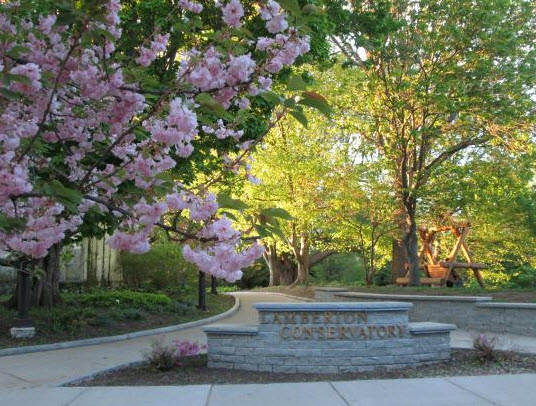In 1888, nurserymen George Ellwanger and Patrick Barry endowed the Rochester community with 20 acres (81,000 m²) of land which became Highland Park,[1] one of the nation’s first municipal arboretums. Highland Park is one of many parks designed by Frederick Law Olmsted, and was designed with the purpose of retaining a natural appearance. Horticulturist John Dunbar, later known in local circles as Johnny Lilacseed, started the park’s famous lilac collection in 1892; some of the 20 varieties he installed were descendants of native Balkan Mountain flowers brought to North America by early colonists.
The park occupies most of a glacial moraine, sharing the hill with a water reservoir and Colgate Rochester Crozer Divinity School.


Highland Park covers over 155 acres (0.63 km2) and features over 1,200 lilac shrubs (over 500 varieties), Japanese maples, 35 varieties of sweet-smelling magnolias, a barberry collection, a rock garden with dwarf evergreens, 700 varieties of rhododendron, azaleas, mountain laurel, andromeda, spring bulbs and wildflowers and a large number of unusual tree species. The park’s pansy bed features 10,000 plants, designed into an oval floral “carpet” with a new pattern each year. Highland Parks has a natural amphitheater, sunken garden, a Gothic-style edifice (known as the “Warner Castle”), and a conservatory greenhouse called Lamberton Conservatory. A statue of Frederick Douglass overlooks the amphitheater. The outdoor amphitheater (Highland Park Bowl) is used for summertime concerts, Shakespeare in the Park and FREE Movies in the Parks series.


Recent Comments